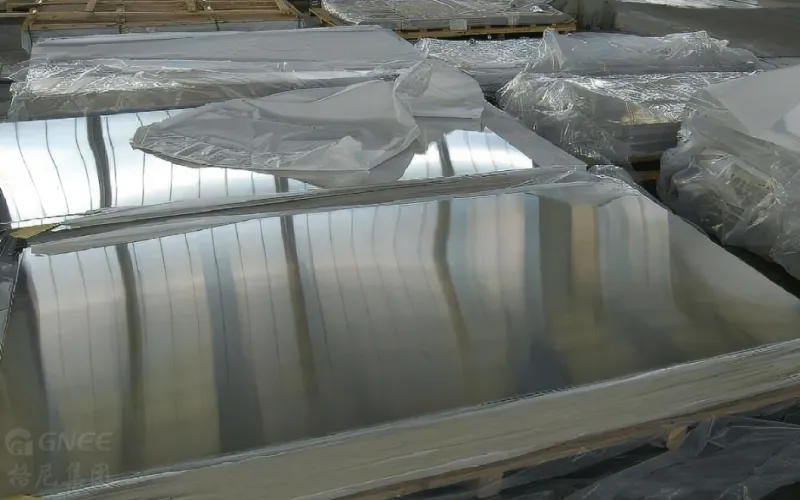What Is Polished Stainless Steel Plate?
In the production process of stainless steel plates, in order to reduce the surface roughness and improve its gloss, it is necessary to polish stainless steel plates. However, polishing cannot improve the dimensional accuracy or geometric shape accuracy of the stainless steel plate. It can eliminate gloss (matting) sometimes.
Polished stainless steel sheets and plates combine great strength with a stunning appearance, making it a popular element of design. It can be used on the exterior of modern buildings, to create an eye-catching reflective appearance, or inside homes and offices, to create features such as signs and shelves. What’s more, polishing the surface of stainless steel plates used for medical devices, food processing appliances, and kitchen utensils can remove harmful substances.
What Are the Benefits of Polishing Stainless Steel Plates?
Although well-known for its distinctive finish, stainless steel can lose its luster with age. Yet polishing stainless steel plate not only helps keep it looking good, but it also has other benefits as well. Here are four main benefits of polishing stainless steel plates shared by our project team.
1. Increasing Resistance to Corrosion and Rust: After the stainless steel plate is left for a period of time or used for too long, a black or gray oxide layer will form on its surface. Its existence not only affects the appearance quality but also affects the performance. Therefore, it is necessary to take appropriate measures to remove it: polishing. Polishing can further improve the corrosion resistance and bright effect of stainless steel plates. It can also significantly help to reduce the number and size of crevices in metal that encourage rust.
2. Enhancing Aesthetics: Aesthetic is the number one thing merchants look for in their products. Through different polishing processing methods, the surfaces of stainless steel plates can have different levels of surface finish, which greatly improves the appearance of stainless steel and increases the appeal to consumers.
3. Removing Contaminants: Polishing eliminates unwanted blemishes, residue, and other contaminants from the surface, even if they’re invisible to the naked eye, which is undesirable for certain applications. In metallurgy, metals often are polished to enable better observation of their crystalline structures, defects, and discontinuities under a microscope.
4. Improving Cleanliness: Polished stainless steel metals are easier to clean than unpolished ones! Those smoother surfaces make it much harder for harmful bacteria and germs to latch onto them, meaning that you won’t need to clean your metals as often. In addition, polished stainless sheets can prevent the spread of disease and also require less maintenance to keep in order.
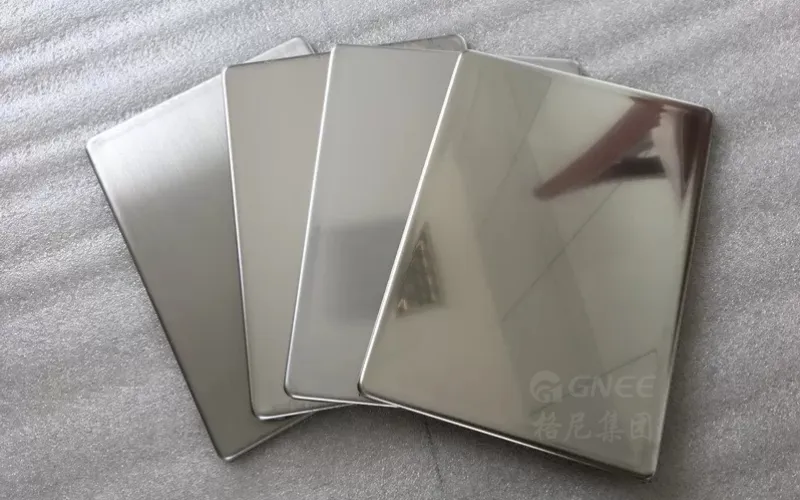
How To Polish Stainless Steel Plates?
Polishing is a traditional and essential manufacturing process. Nowadays, there are multiple ways to polish stainless steel plates, including mechanical polishing, electrolytic polishing, chemical polishing, and so on. Let us briefly understand these different types and their features.
1. Mechanical Polishing
Mechanical polishing is mainly performed on a special polishing machine, which is mainly composed of a motor and a polishing disc. Depending on the different materials of the product to be polished, polishing consumables of different materials (like whetstone strips, wool wheels, sandpaper, etc.) are placed on the polishing disc. And the selection of rough polishing and fine polishing consumables is different.
During mechanical polishing, the ground surface of the sample should be pressed evenly and flatly on the rotating polishing disc. The pressure should not be too high, and it should continue to move radially back and forth from the edge of the disk to the center. Through the relative grinding and rolling action between extremely fine polishing powder (liquid) and the grinding surface, the wear marks are eliminated and a bright mirror surface is obtained.
Advantages:
Low cost, and simple operation.
The finished products have good flatness and high brightness.
Disadvantages:
Low efficiency, and high labor intensity.
It will cause serious pollution. For example, it will produce a large amount of dust, seriously endangering the health of the workshop and workers.
It is easy to cause uneven polishing surfaces, and the polishing time is difficult to control.
Anti-rust maintenance and sealing time is very short.
It is suitable for processing simple parts and small and medium-sized products.
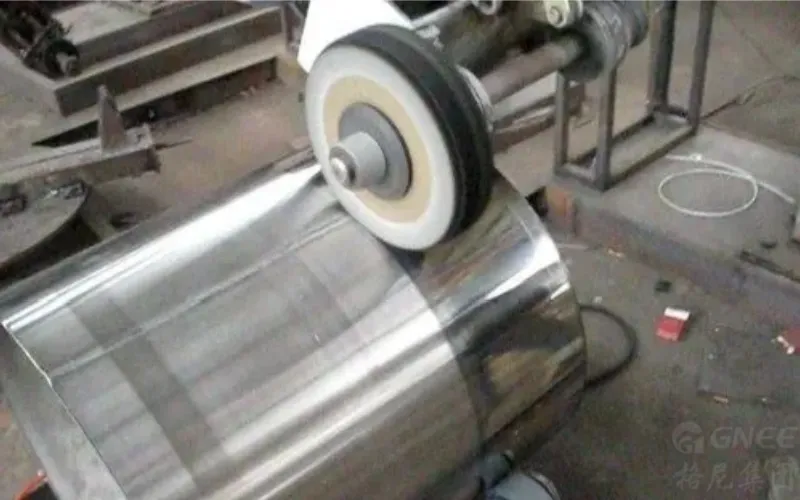
2. Chemical Polishing
Chemical polishing is to allow the microscopic convex parts of the surface of the stainless steel plate to be dissolved preferentially in the chemical solution, thereby obtaining a smooth surface. It does not require any equipment and can polish complex workpieces. The most important thing is to configure a chemical polishing solution. The basic components of chemical polishing solutions include corrosives, oxidants, and water.
Corrosives are the main ingredients. If a stainless steel sheet is dissolved in the solution, polishing cannot be performed. Oxidants and additives inhibit the process and move the reaction in a direction that favors polishing. Water regulates the concentration of the solution and facilitates the diffusion of reaction products. Whether stainless steel plate chemical polishing can proceed smoothly depends on the reasonable combination of the above ingredients.
Advantages:
less investment, high speed, and high efficiency.
The finished products have good corrosion resistance.
It does not require complex equipment, can polish workpieces with complex shapes, and can polish many workpieces at the same time.
Disadvantages:
Low brightness. The surface roughness obtained by chemical polishing is generally several 10μm.
During the chemical polishing operation, nitric acid emits a large amount of yellow-brown harmful gases, which seriously pollutes the environment.
There are many types of polishing solutions and these polishing solutions often have a short lifespan.
The polishing quality and lifespan are not as good as electrolytic polishing.
It is suitable for the processing of small batches, complex parts, and products that require low brightness.
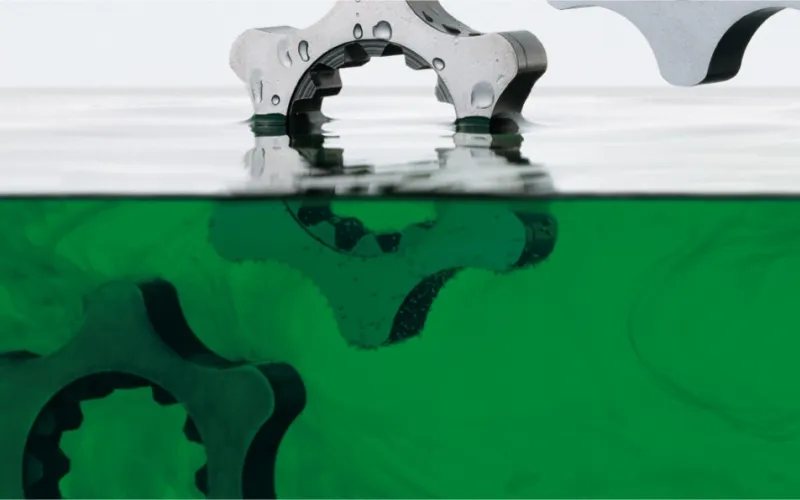
3. Electrolytic Polishing
The principle of electrolytic polishing is the same as that of chemical polishing, which is to selectively dissolve the tiny protrusions on the surface of the stainless steel plate to make the surface smooth. Compared with chemical polishing, the influence of cathode reaction can be eliminated and the effect is better. Stainless steel electrolytic polishing is an environmentally friendly polishing and is favored by more and more enterprises at present.
The electrolyte usually consists of three components: (1) oxidizing acid, which is the main component of electrolyte, such as perchloric acid, chromic acid, and orthophosphoric acid; (2) solvent, which is used to dilute the acid and can be dissolved in the polishing agent. In the film produced during the grinding process, such as alcohol, acetic anhydride, and glacial acetic acid; (3) Water.
In addition, the electropolishing process is divided into two steps:
1. Macroscopic leveling. The dissolved products diffuse into the electrolyte, and the geometric roughness of the material surface decreases, Ra>1μm.
2. Micro-gloss smoothing. anodic polarization, improved surface brightness, Ra<1μm.
Advantages:
Long mirror gloss, stable process, low pollution, and high efficiency.
The finished products also have good corrosion resistance.
The polishing time is short, and multiple pieces can be polished at the same time.
It will not cause metal surface deformation.
Disadvantages:
Pre-polishing treatment is more complicated.
The electrolyte has poor versatility and a short service life.
In the process of electrolytic polishing, auxiliary electrodes and cooling equipment are required.
It is suitable for mass production, mainly used in advanced products, export products, and tolerance products.
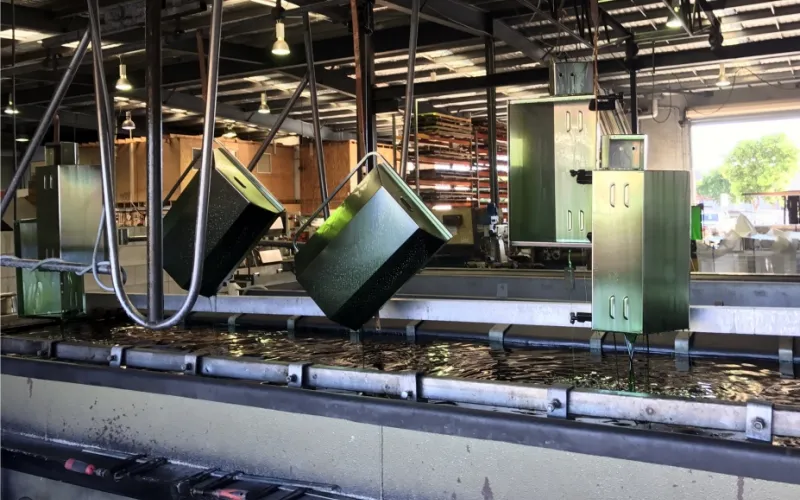
4. Ultrasonic Polishing
The workpiece is placed in the abrasive suspension and placed together in the ultrasonic field. According to the oscillation effect of the ultrasonic waves, the abrasives are ground and polished on the surface of the workpiece.
Advantages:
Ultrasonic processing has small macroscopic forces and will not cause deformation of the workpiece.
Ultrasonic processing can be combined with chemical or electrochemical methods. On the basis of solution corrosion and electrolysis, ultrasonic vibration is applied to stir the solution to separate the dissolved products from the surface of the workpiece and make the corrosion or electrolyte near the surface uniform; the cavitation effect of ultrasonic waves in the liquid can also inhibit the corrosion process and facilitate surface brightening.
Disadvantages:
Tooling is difficult to make and install.
5. Fluid Polishing
This kind relies on high-speed flowing liquid and the abrasive particles it carries to wash away the surface of the workpiece to achieve the purpose of polishing. Commonly used methods include abrasive jet machining, liquid jet machining, fluid power grinding, etc.
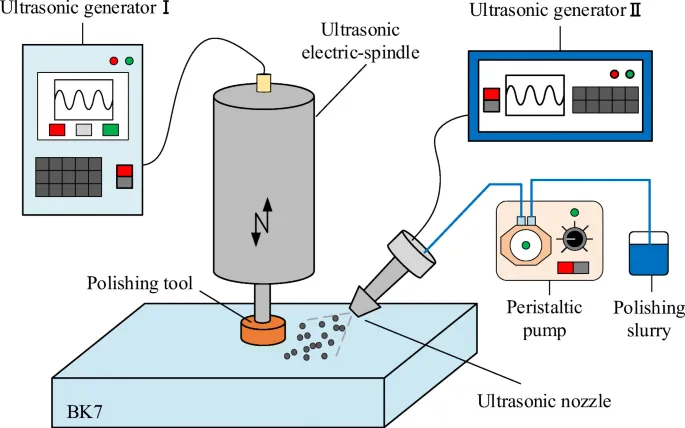
6. Magnetic Grinding and Polishing
It uses magnetic abrasives to form an abrasive brush under the action of a magnetic field to grind the stainless steel plates. This method has high processing efficiency, good product quality, easy control of processing conditions, and good working conditions. When applied in appropriate abrasives, the surface roughness can reach Ra0.1μm.
7. Chemico-mechanical Polishing
It is a technique used to planarize surfaces by chemically and mechanically removing material from the surface. The polished effect is very bright, has no faults, and has good flatness. Chemico-mechanical polishing technology combines the advantages of chemical grinding and mechanical grinding and is now the most commonly used polishing method.
It can obtain a more perfect surface while ensuring material removal efficiency. The obtained flatness is 1-2 orders of magnitude higher than simply using these two grinding methods. And it can achieve surface roughness from nanometer to atomic level. Common products in our daily lives include mobile phone cases, card removal pins, buttons, etc.
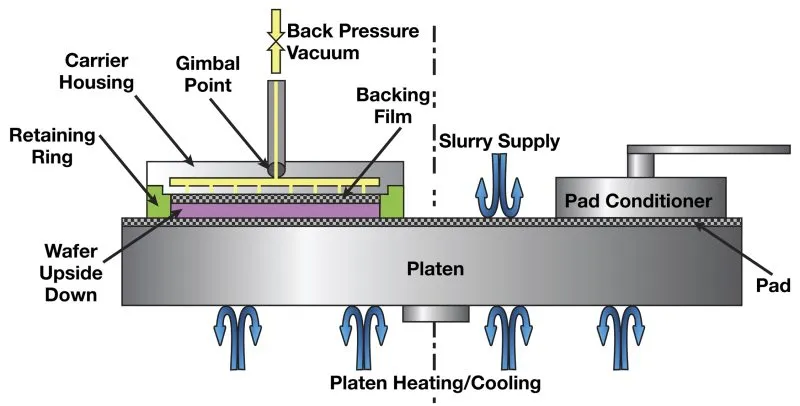
8. Nano Polishing
Nano-polishing is also called plasma polishing, which is a new environmentally friendly polishing process. The polishing liquid used in nano-polishing has a small oxide particle size and strong hardness, so it does not produce scratches during polishing and has a good polishing effect. Nowadays, it is widely used in electronics, furniture, medical, automotive, aerospace, and other fields. Compared with traditional polishing processes, the advantages of nano polishing are:
1. Environmental-friendly. Its waste fluid can be discharged directly without causing pollution, or it can also be slightly processed and recycled. It also has no pollution to the processing environment and adapts to the development direction of green manufacturing;
2. Simple operation. Plasma polishing uses special automated control equipment, which is simple to operate and easy to maintain.
3. Low cost. The processing cost is low, which is conducive to promotion, and can reduce operating personnel and reduce labor costs. At the same time, it can also save customers a lot of material consumption caused by traditional polishing methods such as manual mechanical polishing, electrolytic polishing, and chemical polishing.
4. High efficiency. The automated control equipment can achieve the electroplating mirror effect within ten seconds to two minutes through special chemicals, significantly improving production efficiency.
5. Good polishing quality. Products polished by automated control equipment have high quality, extremely high precision control, small size impact, and uniform polishing so that the entire workpiece surface and dead corners can achieve a consistent mirror effect and enhance the product surface’s chemical properties.
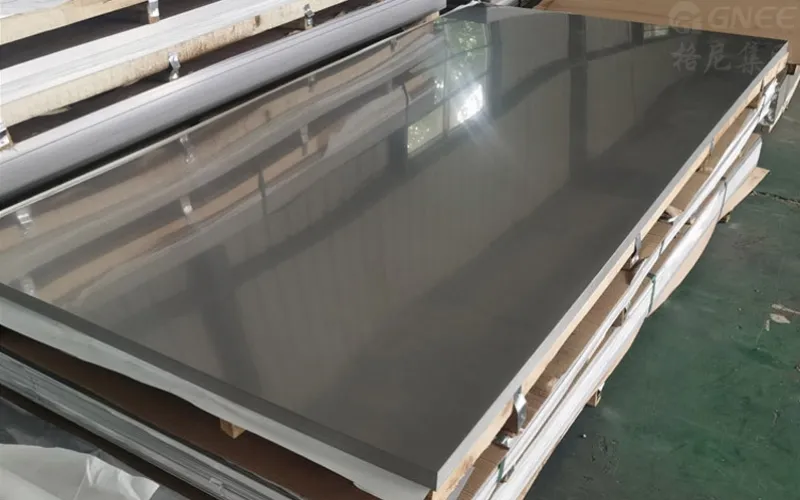
Polished Stainless Steel Plate Brightness Levels
By visual inspection, the brightness of the surface of the polished stainless steel sheets and plates can be divided into 5 levels:
| Levels | Brightness |
| Level 1 | There is a white oxide film on the surface; no brightness |
| Level 2 | Slightly bright and the outline cannot be seen clearly |
| Level 3 | The brightness is good and the outline can be seen |
| Level 4 | The surface is bright and the outline can be seen clearly (equivalent to the surface quality of electrochemical polishing); |
| Level 5 | Mirror-like brightness |
Gnee Can Polish Any Metal Size for Your Projects
Gnee’s state-of-the-art equipment keeps up with today’s steel polishing procedures. Our team of expert metal polishers is ready to hear about your project — from minor details to the size of the metal you want to use. Contact us to learn more about polishing custom stainless steel products and how you can bring your best work to life. Gnee is a team of doers who believe we can deliver any concept you dream up.


